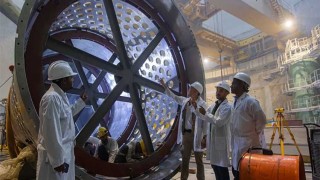Anal Fistula: Causes, symptoms and treatment
22 August 2022, 08:48 pm | Updated: 24 November 2024, 05:11 am

An anal fistula is a tunnel that runs from inside the anus -- the hole your body uses to get rid of solid waste -- to somewhere in the skin around it. It usually follows an infection that didn’t heal the right way. Your doctor can repair the fistula, but you'll need surgery for that.
What Causes It?
Just inside your anus are several glands that make fluid. Sometimes, they get blocked or clogged. When that happens, a bacteria buildup can create a swollen pocket of infected tissue and liquid. Doctors call this an abscess.
If you don’t treat the abscess, it’ll grow. Eventually, it’ll make its way to the outside and punch a hole in the skin somewhere near your anus so the gunk inside it can drain. The fistula is the tunnel that connects the gland to that opening.
Most of the time, an abscess causes a fistula. It’s rare, but they can also come from conditions like tuberculosis, sexually transmitted diseases, or an ongoing illness that affects your bowels, such as Crohn’s disease or ulcerative colitis.
What Are the Symptoms?
The most common symptoms are:
- Pain
- Redness
- Swelling around your anus
You might also notice:
- Bleeding
- Painful bowel movements or urination
- Fever
- A foul-smelling liquid oozing from a hole near your anus
If you have any of these symptoms, call a doctor.
How Is It Diagnosed?
If the doctor thinks you have an anal fistula, they'll ask about your medical history and give you a physical exam.
Some fistulas are easy to spot. Others aren’t. Sometimes they close on their own, then open back up. Your doctor will look for signs of oozing fluid or bleeding. The doctor might stick a finger into your anus during the exam.
The doctor will probably send you to a specialist in colon and rectal problems for more exams or imaging tests like X-rays or a CT scan. You might even need a colonoscopy. For this test, the doctor will put a tube with a camera on the end into your anus to look at the inside of your bowels. You’ll be asleep when this happens.
Treatment
There’s no medication to fix the condition, so surgery is used. The procedure can usually take place in a doctor’s office or clinic. You won’t have to go to the hospital.
For a simple fistula that isn’t too close to your anus, the doctor will cut open the skin and muscle surrounding the tunnel. This allows the opening to heal from the inside out. They may use a plug to close the fistula.
For a more complicated fistula, the doctor might put a tube -- known as a seton -- into the opening. This helps drain the infected fluid before surgery. It could take 6 weeks or more.
Depending on where the fistula is, your doctor may have to cut into the sphincter muscles that open and close your anus. They'll try not to damage them, but it may be harder to control your bowels after the procedure.






















